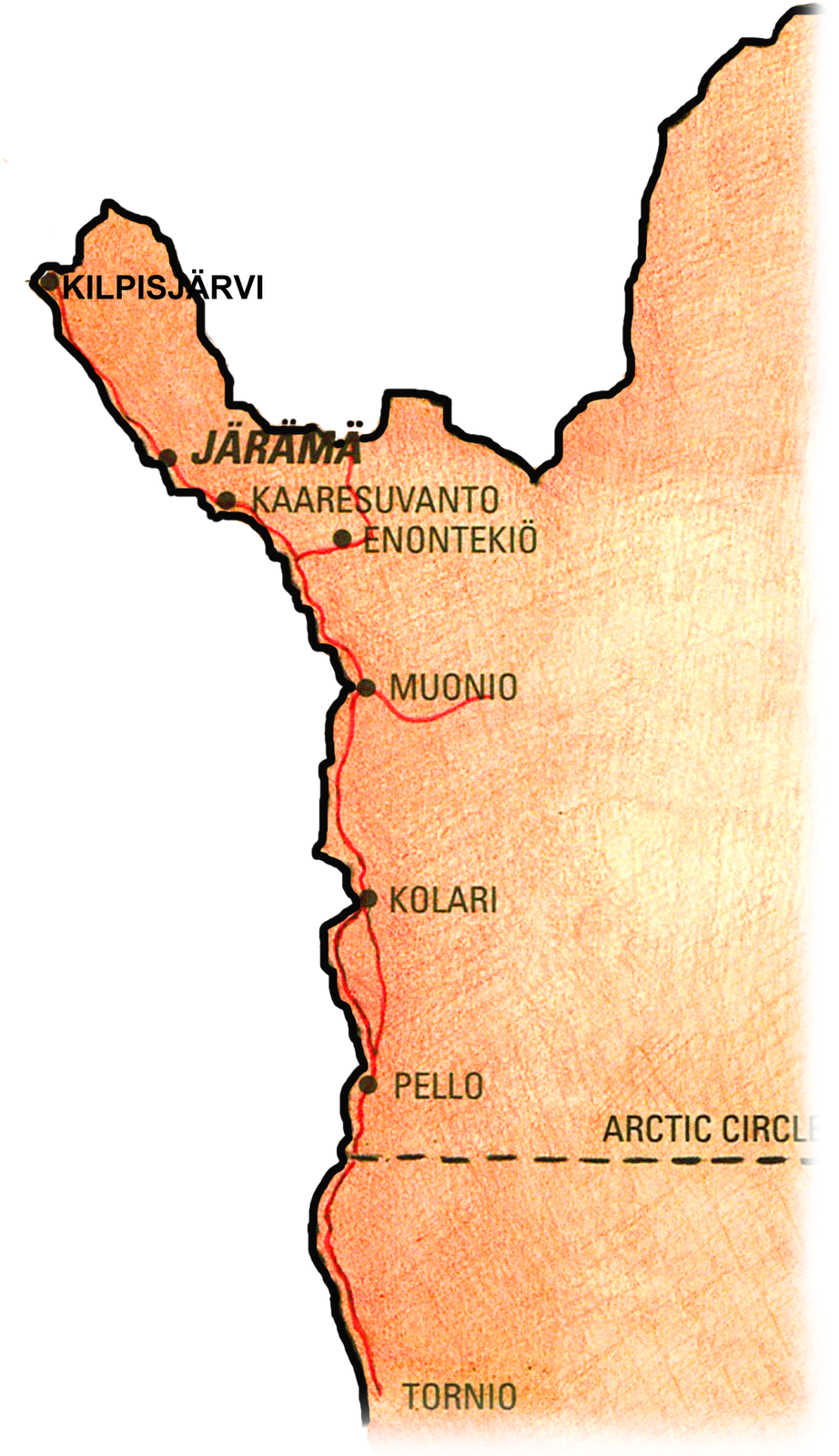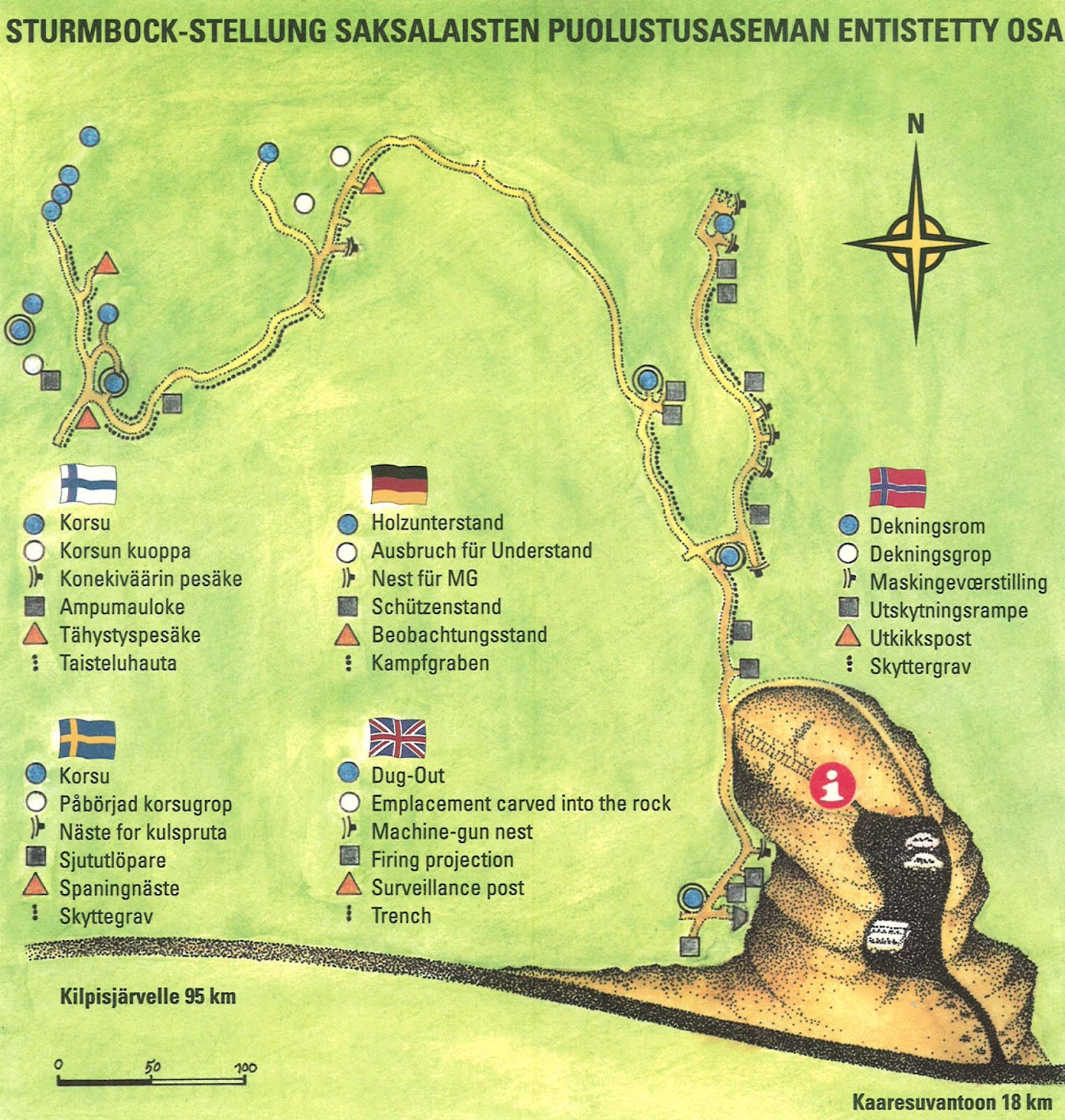
Järämä
Sturmbock-Stellung, the Järämä fortification area, is located in Enontekiö along highway 21/E8 between the villages of Maunu and Luspa, about 20 km from the Karesuvanto village in the direction of Kilpisjärvi. The Järämä fortification area from the Lapland War is an interesting place to visit. The area has several restored dugouts, trenches, a museum building, and a café.
Järämä
Phone
(016) 524 605
0400 716 908
10.6.-20.9.2025 Tuesday – Saturday 11-18
Exceptional Office HoursClosed on midsummer
Visiting Address
Käsivarrentie 5465
99470 Karesuvanto
Open map
Museum & Fortification Area
On the southern edge of the area, right next to the Kilpisjärventie road, is a museum completed in 1997. Its permanent exhibition's theme is the war era in Fell Lapland. The exhibition presents events and artefacts from the Lapland War, as well as the evacuation of the civilian population and the ensuing reconstruction work. There is a café at the museum.
The Järämä fortification area was originally built by the Germans and was part of a larger entity to protect the ports in the Northern Arctic Ocean area. Most of the fortification area is built into solid rock by excavating. Actual battles were never fought there.
History
In 1944, the German 20th Mountain Army was given a new task, which meant holding the Petsamo area nickel mine. At this time, the other part of the military front had to be turned towards the south in which direction the Soviet troops were seen as the worst threat. In the rear, the fortification of two major defence positions began. In the direction of the Arctic Ocean, construction started on the "Ivalo-Schutzstellung" position at the Vuotso-Tankavaara level. In Enontekiö, at the narrowest point of the Finnish 'arm', a position codenamed "Sturmbock-Stellung” was built.
In early August 1944, work began on the western side of the Lätäsenojoki River, at the eastern edge of the fell zone. The builders were German construction pioneers, German Organisation Todt civilian builders, and prisoners of war. The latter were probably mostly Russian. The workforce may have risen to as many as three thousand men.
After Finland's armistice with the Soviet Union and the altered political situation, the Germans' carefully timed retreat turned into the so-called Lapland War. This marked the bitter end of the Second World War for the Germans, the Finns, and especially the Lapland province and its people. The German, reinforced 7th Mountain Division (approx. 12,000 men) occupied the almost completed Sturmbock position in late October 1944. The Finnish troops, which comprised only two reinforced conscript battalions, stopped in front of the German positions in the village of Markkina. With the arrival of a severe winter, military operations were reduced to skirmishes between patrols.
With the 20th Mountain Army's mission changing once again, the Germans abandoned their well-fortified positions west of the Lätäseno River without a fight in the first days of January 1945. By this time, other German forces had already abandoned the Petsamo area and marched to central Norway, or some troops had already been shipped home. The last German defensive position in the Scandinavian Shield area was the Lyngen position, whose right flank rested on Lake Kilpisjärvi. The last German troops left our land at the end of April 1945.
Restored part of the position
In the Järämä fortification area, there are a total of 1,209 running metres of restored battle, connecting, and crawling trenches. Ten different types of weapon emplacements associated with the trenches have been restored or rebuilt, including nests for heavy and light machine guns. Of the actual heavy weapon emplacements, a covered emplacement for a heavy anti-tank gun and two likely rocket launcher nests have been restored. Observation/fire control emplacements have been completely rebuilt.
There are a total of five dugouts, two corrugated iron (steel element) dugouts and three different types of wooden dugouts. The aim was to reconstruct only one of each type of emplacement and dugout found in the area. That is why the other 11 wooden dugouts in the area and the pits for which work had started were left in their current state for comparison.
Drafting the reconstruction drawings utilised construction archaeology methods, and information was obtained from the Bundesarchiv and Militärarchiv of the German Federal Republic, as well as from German veteran organisations.
The Järämä fortification area is open from Midsummer to mid-September. During that season you can also ask for a guide to visit the area with you, and they can tell you more about the history of the place.
Järämä has a café and exhibition spaces with a permanent exhibition entitled "The War Period in Fell Lapland".

